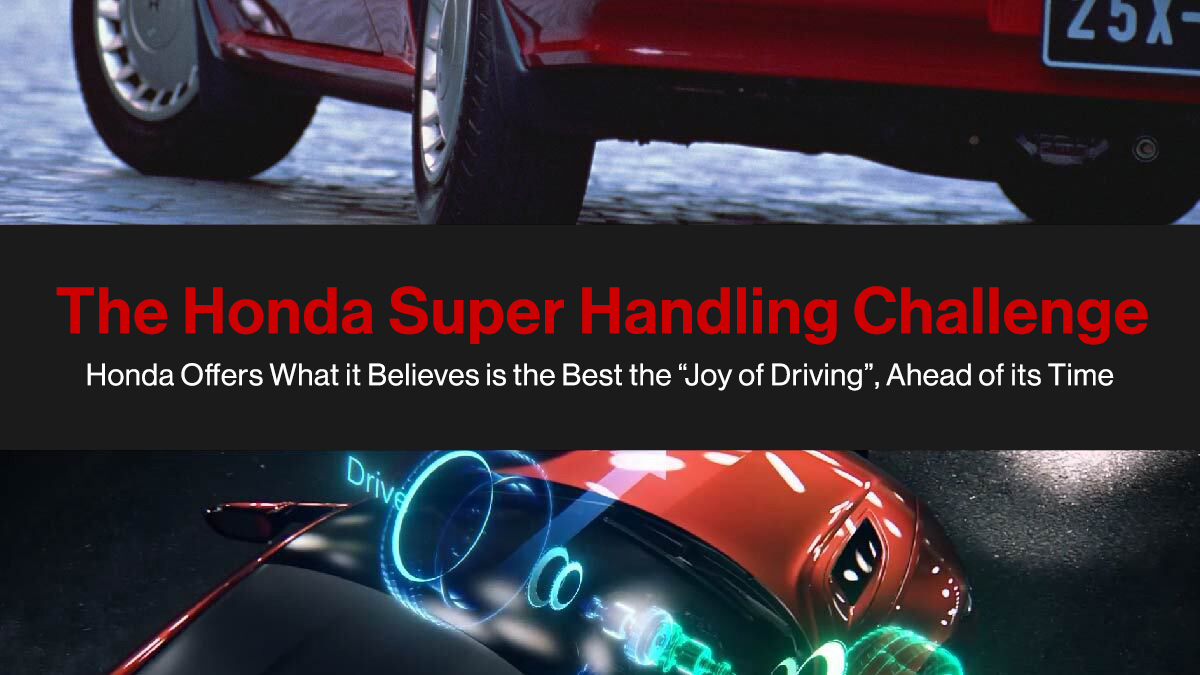
Miyagi
What struck me today on the RC213V is its stability, which is in another dimension. Shifting up the gears lifts the front into a wheelie each time. Even if you’re banking a bit, you can keep on accelerating without changing posture. This astounded me. It made me want to lift the front just for the fun of it, even though it would slow me down. Is this possible because the RC213V is designed to consistently use all of the tires’ grip?
Sato
Yes. In this case, tire grip is a tug of war with the force coming from the drive chain. If the force from the chain is too strong, the tire spins. The more it spins, the less you accelerate. The question is, how to push to the limit without suddenly slipping. How to keep the bike stable if it slips. That is where the bike’s characteristics have to be designed. If, for example, the bike is leaning to the left when it suddenly slips under acceleration.


Miyagi
The bike slides to the right. The rear’s motion affects the front, and causes instability.
Sato
That’s correct. So it’s vital to maintain rear grip even when the bike is leaning to the side. As you know, MotoGP bikes meander on the straights. That’s because the centrifugal force generated by meandering increases tire grip, and reduces the chance of a wheelie, compared to riding in a straight line. There are other factors, such as keeping the chain from vibrating when accelerating, and setting the optimal swing arm angle. We make changes, one at a time, with feedback from the rider, and by looking at the data.
Giving the rider peace of mind to challenge the limits
Miyagi
I see. I can understand the theory, but designing a bike’s performance would be like aiming for a moving target. There wouldn’t be a perfect formula to cater to every situation.
Sato
There isn’t. The rider is always moving on the bike, so the center of gravity is also always changing.
Miyagi
Compared to racing cars, the rider plays a large role on a racing bike. Their feelings, and their wishes are vitally important in developing a bike. Being able to reflect the rider’s feedback in a bike shows how good the development team is.

Sato
If, for example, the rear tire lifts under braking, you’re essentially riding a unicycle. It’s better to get the same deceleration with both tires on the ground from the perspective of using 100% of the tires’ performance, so the rider says “keep the rear tire on the ground when I brake.” The easiest way to do this is to place weights on the rear.
Miyagi
Yes, but that would reduce the bike’s top speed.
Sato
Precisely. Understanding the rider’s comments, looking at the data, analyzing it, and applying what really is necessary in the form of tangible technology is what is needed. Why do you have to rely on heavy braking? Is it because the top speed isn’t fast enough? Why isn’t the top speed fast enough? Is it because acceleration isn’t fast enough? Is acceleration not fast enough because the speed in the turns isn’t fast enough? And so on.


Miyagi
Going around in circles. So you have to take each request from the rider, and select the best method from the myriad of options available.
Sato
We sometimes reset what we believed was the right solution. Until recently, the RC213V engine’s crankshaft rotated in the same direction as the tires. It was necessary to give the riders “more power” compared to our high-powered competition, but in 2016 we reverted to a counter rotating engine.
Miyagi
Before I retired, the NSR I rode had a counter rotating engine, so Honda has a lot of knowhow.




